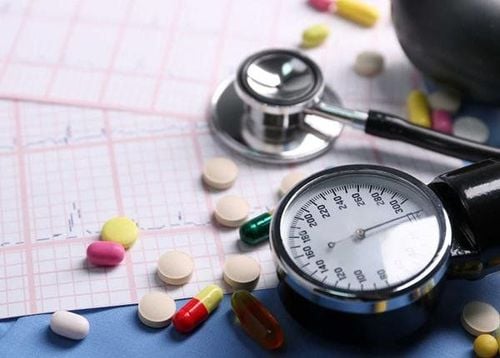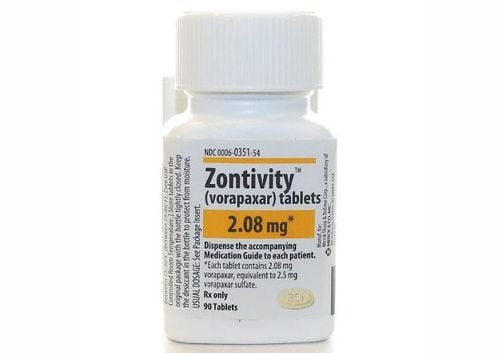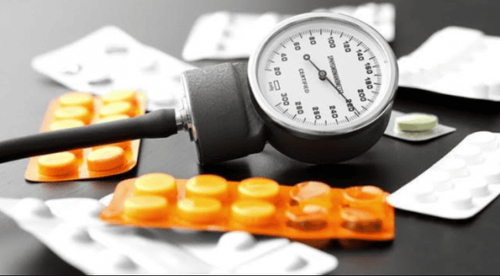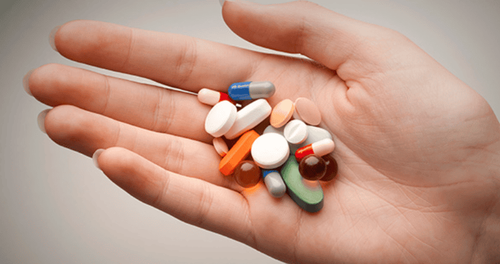This is an automatically translated article.
The article was professionally consulted by Specialist Doctor I Nguyen Hong Phuc - Emergency Resuscitation Doctor, Emergency Resuscitation Department - Vinmec Phu Quoc International General HospitalStroke is one of the leading causes of death in the world. On average, 1 person dies from a stroke every 3 minutes. What is a stroke? What are the signs of a stroke? Let's find out more in the article below.
1. What is a stroke?
Stroke is also known as cerebrovascular accident. This is a condition in which the brain is severely damaged because the blood supply to the brain is interrupted or significantly reduced, causing the brain to lack oxygen and not enough nutrients to nourish the cells. Within minutes without an adequate blood supply, brain cells will begin to die.
Therefore, people who have had a stroke need immediate emergency care, the longer it lasts, the more dead brain cells will greatly affect the body's ability to move and think, even the brain. dead. Most stroke survivors have impaired health or have sequelae such as paralysis or weak movement of a part of the body, aphasia, emotional disturbances, impaired vision...
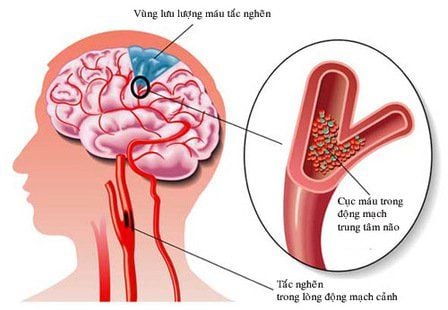
Ischemic stroke: It accounts for about 85% of all strokes today. This is a stroke caused by blood clots blocking an artery, preventing blood flow to the brain. Hemorrhagic stroke: Hemorrhagic stroke is a condition in which a blood vessel to the brain bursts, causing massive bleeding. The cause of a blood vessel rupture is a weak artery wall or the appearance of cracks or leaks. In addition, the patient may experience a transient ischemic attack. This is a condition in which the blood supply to the brain is temporarily reduced. Patients have symptoms of a stroke, but they only last for a very short time, usually lasting a few minutes. This is a warning sign of the risk of a stroke that can occur at any time that the patient needs to be aware of.
Trắc nghiệm: Bạn có hiểu đúng về huyết áp cao không?
Huyết áp cao còn được gọi là kẻ giết người thầm lặng vì bệnh thường không có triệu chứng. Thiếu hụt kiến thức về huyết áp cao có thể làm cho tình trạng bệnh trở nên trầm trọng hơn. Dưới đây là những câu hỏi trắc nghiệm vui giúp bạn hiểu đúng về bệnh cao huyết áp.2. What causes a stroke?
There are many factors that increase the risk of having a stroke, including unmodifiable factors and medical factors.2.1. Elements that cannot be changed
Age: Anyone is at risk of having a stroke. However, the elderly have a higher risk of stroke than the young. After age 55, the risk of having a stroke doubles every 10 years. Gender: Men have a higher risk of stroke than women. Family history: People who have a family member who has had a stroke have a higher risk of having a stroke than the general population. Race: African-Americans are nearly twice as likely to have a stroke as whites.
2.2. Pathological factors
History of stroke: People with a history of stroke have a higher risk of having a second stroke, especially within the first few months. This risk lasts about 5 years and decreases over time. Diabetes: Problems associated with diabetes can potentially increase the risk of stroke. Cardiovascular disease: People with cardiovascular diseases are more likely to have a stroke than the general population High blood pressure: High blood pressure puts increased pressure on the artery walls, which over time causes damage to the artery walls leading to brain hemorrhage. In addition, high blood pressure also creates conditions for blood clots to form, hindering blood flow to the brain. A blood pressure test is one of the ways to find the cause of a stroke. Blood fats: High cholesterol can build up on the artery walls, forming an obstruction that blocks blood vessels in the brain. Overweight, obesity: Being overweight or obese can lead to many diseases such as high blood pressure, blood fat, and heart disease. Increased risk of stroke. Smoking: Studies have shown that smokers are twice as likely to have a stroke. Smoking damages the walls of blood vessels, accelerating the process of hardening of the arteries. Smoking also damages the lungs, making the heart work harder, causing high blood pressure. Unhealthy lifestyle: Eating in moderation, not with a full range of nutrients; Inactivity is one of the leading causes of stroke. In addition, stroke is also thought to be related to the use of stimulants, drinking too much alcohol...
3. Signs of a stroke
The signs of a stroke can appear and disappear very quickly, repeated over and over again, including:Body fatigue, suddenly feeling powerless, numbness of the face or half of the face, smiling distorted. Difficulty or impossible movement of limbs, paralysis on one side of the body. The most accurate stroke sign is not being able to raise both arms above your head at the same time. Difficulty in pronunciation, unclear words, sticky words, abnormal slurred speech. You can perform the test by saying simple sentences and asking the patient to repeat, if unable to repeat, the patient is showing signs of stroke. Dizziness, dizziness, sudden loss of balance, inability to coordinate activities. Decreased vision, blurred vision, not seeing clearly Severe headache, headache that comes on very quickly, may cause nausea or vomiting

The signs of a stroke can come and go very quickly. You need to listen to your body, when you see these signs appear, take the initiative to see a doctor as soon as possible to be checked. The "golden" time for stroke is 60 minutes, with each passing minute, the degree of damage to the nervous system becomes more severe.
>See more: The golden moment for brain stroke emergency - Expert consultation with MSc Tran Duc Tuan - Resident Doctor of Radiology
4. How to prevent a stroke
4.1. Reasonable diet
Causes of stroke come from cardiovascular diseases, diabetes, blood fat. .. Diet is an important factor determining the formation of these diseases. Eating with proper nutrition is an effective way to prevent stroke.Eat a lot of vegetables, legumes, grains Eat a lot of white meat, seafood, eggs to supplement protein for the body, limit red meat Limit foods high in fat, junk food fried foods, fast foods Limit sweets, foods high in sugar Drink lots of water, juice, soy milk...
4.2. Daily exercise
Exercise helps to increase blood circulation in the body, improve health, and keep the heart healthy. Exercising for 30 minutes a day, at least 4 times a week, reduces the risk of cardiovascular disease, leading to stroke.4.3. Keep the body warm
A cold can cause high blood pressure, which increases the pressure that causes blood vessels to burst. It is necessary to keep the body warm and stay healthy, especially for the elderly during the season change.4.4. No smoking
Smoking is one of the risk factors that increase your chances of having a stroke. Smoking is also harmful to your health and those around you. If you quit smoking within 2 to 5 years, your risk of having a stroke will be the same as that of a person who has never smoked.4.5. Periodic health check
Periodic health check-ups early detect stroke-causing factors and proactively intervene will help prevent stroke effectively.People with diabetes, heart disease, and blood lipid diseases need to have regular health check-ups to control their disease, not to let the index exceed dangerous levels, causing stroke.
Periodic health check-up is one of the ways of early recognition and prevention of disease, especially for patients with a history of stroke, from which to have a treatment plan with optimal results. Currently, Vinmec International General Hospital has general health checkup packages suitable for each age, gender and individual needs of customers with a reasonable price policy, including:
Health checkup package general Vip Special general health checkup package Standard general health checkup package Patient's examination results will be returned to your home. After receiving the results of the general health examination, if you detect diseases that require intensive examination and treatment, you can use services from other specialties at the Hospital with quality treatment and services. outstanding customer service.
Please dial HOTLINE for more information or register for an appointment HERE. Download MyVinmec app to make appointments faster and to manage your bookings easily.





